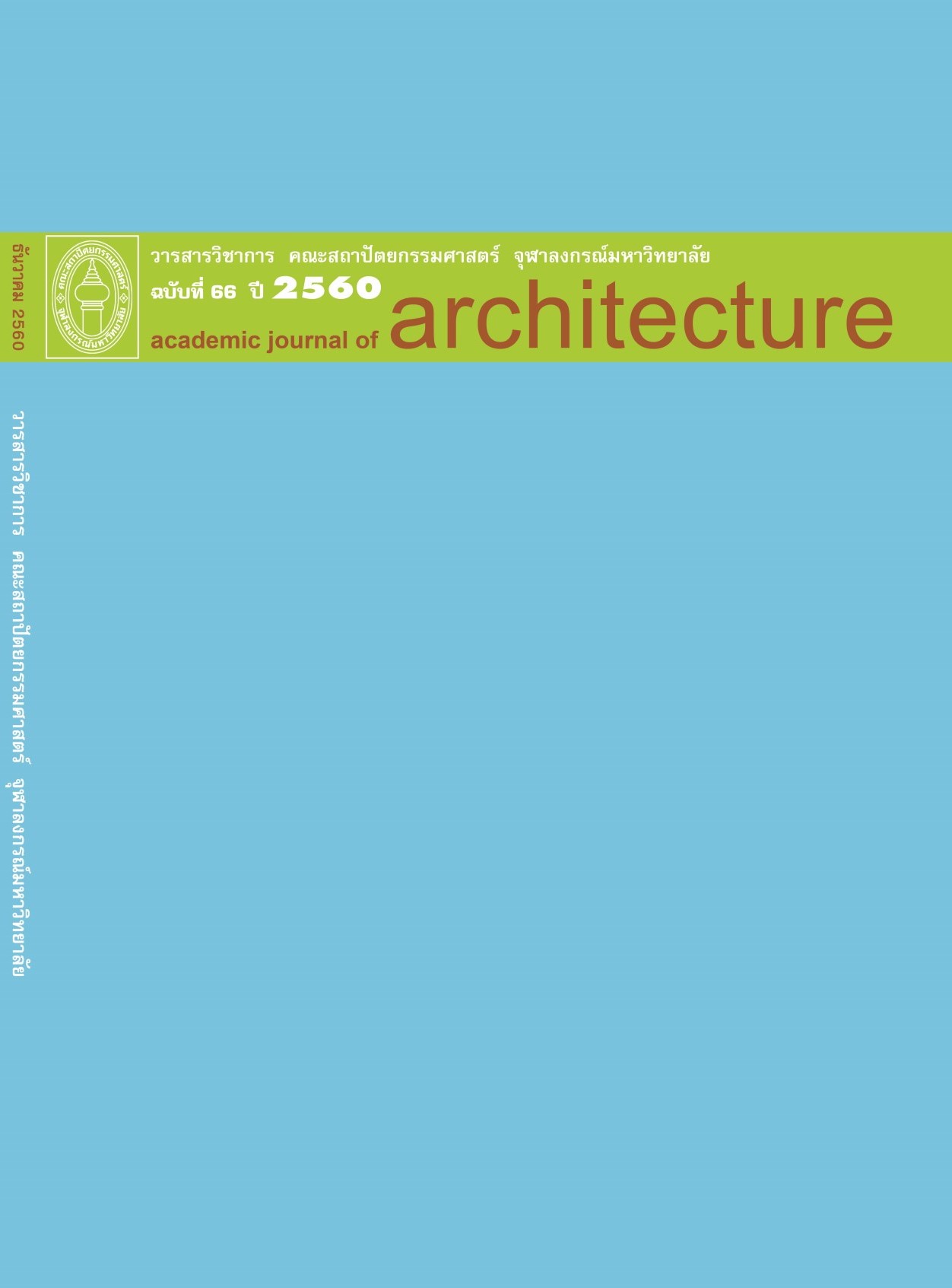Ecovillage: Design Guidelines and Assessment System for Sustainable Housing Projects
Main Article Content
Abstract
National Housing Authority (NHA) launched a research project to develop a rating system for assessing self-sufficient and eco-friendly community called Ecovillage in 2012. The rating system has been used as a guideline and assessment tool for developing NHA’s housing projects, however, it is found that some requirements of Ecovillage could not be applied to some projects due to limitations caused by particular site context, projects’ budget, lack of understanding and management capability. As a result, NHA conduct a research aiming to improve the existing Ecovillage rating system through analysis of previous implementation, study of similar domestic and international rating systems, actual project assessment for both NHA’s and non-NHA’s projects and coordination with NHA’s working team to identify obstacles and limitations in Ecovillage implementation. Survey of NHA officials on this process will help identifying which existing Ecovillage requirement should be set as prerequisites or minimum criteria for eco housing development in the new Ecovillage. The new Ecovillage will be able to practically direct design, construction, and management of the future NHA’s development while the concept of energy efficiency and environmental concern will not be compromised.
Researchers have conducted energy simulation and cost analysis in order to combine the results with the survey results from NHA officials. Open group discussion with experts and NHA executives was organized to conclude the final version of Ecovillage. Four major criteria used for drafting the new Ecovillage are 1. Reduction of time, expenses, and paperwork spent by NHA architects and engineers, 2. Avoidance of complex physics calculation, 3. Emphasis on self-assessment by NHA officials – need no expert, and 4. Avoidance of complicated simulation software. The final version of the new Ecovillage then come into ‘Prescriptive Format’ or simple checklists so that NHA architects and engineers can perform design evaluation by themselves. By using the new Ecovillage, energy saving is expected at 18-38% and the cost increases by less than 9%. The payback period is 1-8 years.
Article Details
References
2. สมาคมสถาปนิกสยามในพระบรมราชูปถัมภ์. สร้างสรรค์อาคารสบาย. กรุงเทพฯ: โรงพิมพ์อุดมศึกษา, 2547.
3. องค์การบริหารจัดการก๊าซเรือนกระจก. คู่มือบ้านและอาคารคาร์บอนต่ำ. กรุงเทพฯ: โรงพิมพ์เปเปอร์เมท, 2554.
4. อรรจน์ เศรษฐบุตร. คู่มือเกณฑ์การประเมินชุมชนยั่งยืน Ecovillage. กรุงเทพฯ: โรงพิมพ์เปเปอร์เมท, 2555.
5. BCA. “BCA Green Mark for New Residential Buildings Version RB/4.1. Building and Construction Authority.” Accessed May 29, 2018. https://www.bca.gov.sg/GreenMark/others/gm_resi_v4.1.pdf.
6. USGBC. “LEED v4 for Homes. Reference Guide. U.S. Green Building Council.” Accessed May 29, 2018. https://www.usgbc.org/guide/homes.
7. USGBC. “LEED v4 for Neighborhood Development. Reference Guide. U.S. Green Building Council.” Accessed May 29, 2018. https://www.usgbc.org/guide/nd.


